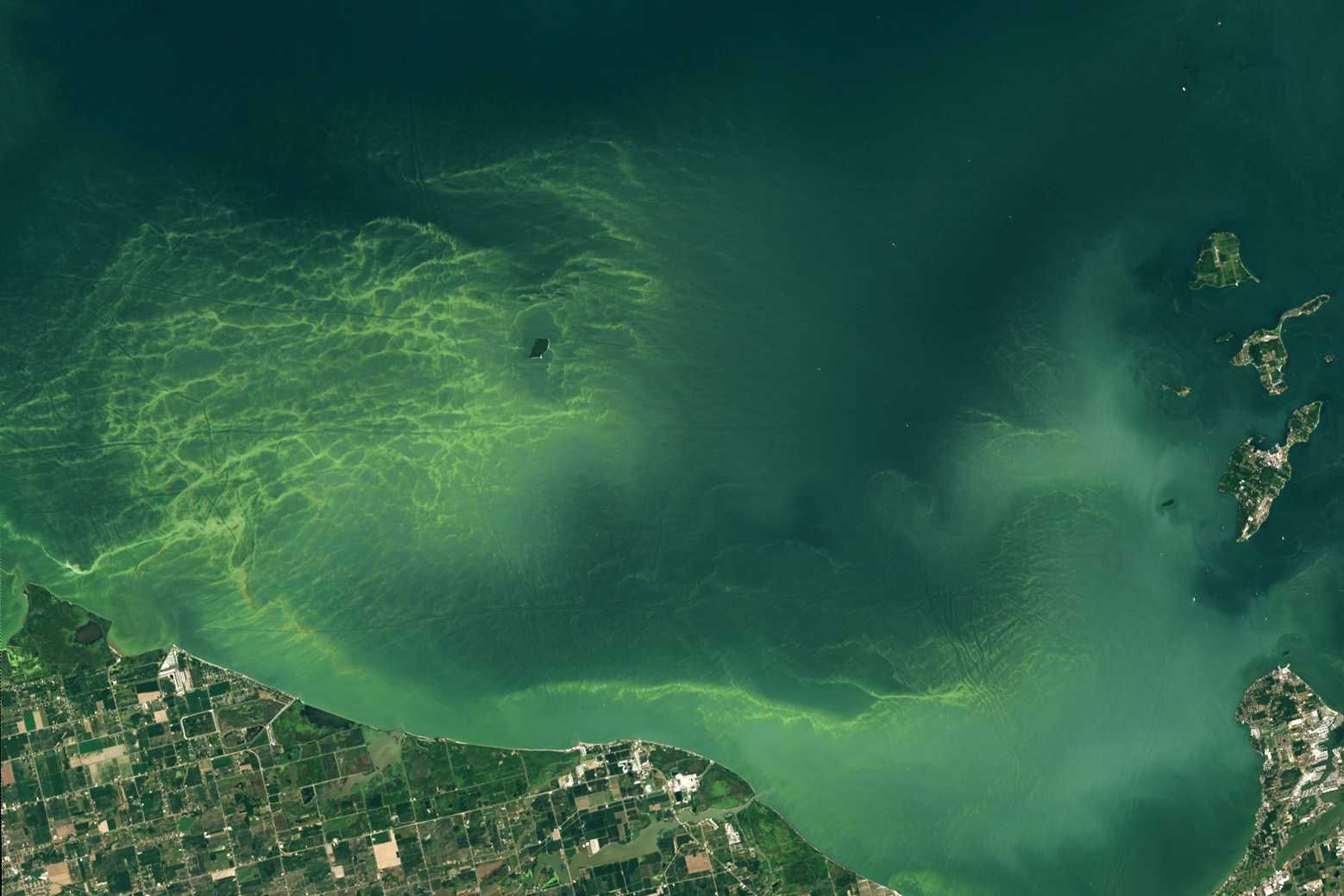Bursting the Harmful Algal Bloom Bubble
by Elijah de Castro

TITLE: Bursting the Harmful Algal Bloom Bubble
AUTHOR: Elijah de Castro (currently the health solutions reporter for The Keene Sentinel in New Hampshire; formerly a reporter covering rural communities for The People-Sentinel in Barnwell, South Carolina)
SOURCE: Sierra Magazine (the national magazine of The Sierra Cub), Fall 2025, page 34
PERMISSION TO USE in part, and to link to the source, granted by Sierra Magazine. Photo of algal bloom on Lake Erie used courtesy NASA's Earth Observatory.
SierraMagazine is dedicated to stories about exploring, protecting, and living in harmony with the natural world. An article appeared in the magazine’s Fall 2025 issue which offers a ray of hope in our efforts to address our own man-made environmental issues. The Wilma Dykeman Legacy was granted permission from the magazine’s staff “to publish the first four paragraphs of the article along with a link back to the rest of the article" on the Sierra Magazine site.
Bursting the Harmful Algal Bloom Bubble
A device emitting sound waves can cause tiny explosions in cyanobacteria – enough to keep their toxicity at bay
Massive swaths of blue-green in lakes, rivers and oceans are now a common sign of an unhealthy aquatic ecosystem. The color comes from cyanobacteria, which thrive when agricultural runoff full of fertilizers mixes with warm water. As these blooms of cyanobacteria – commonly referred to as blue-green “algae” – spread, they consume the oxygen around them, killing fish and harming other aquatic life.
City, state, and federal agencies have some strategies to control the blooms: deploying algaecides, requiring no-till farming (which reduces runoff), and increasing circulation in slow-moving water. But these can be expensive, take a long time to implement, and in some cases have negative side effects. For an affordable, more immediate fix, some agencies are now rolling out ultrasonic algae remediation devices that kill cyanobacteria using sound.
HOW IT WORKS
Cyanobacteria and algae are different organisms, but both photosynthesize, emit similar hues,and can harm waterways. Cyanobacteria are more toxic and are responsible for most harmful “algal” blooms (a misnomer) which can cause skin irritation and respiratory issues in humans.
(To read the rest of this article, click on the following link.)